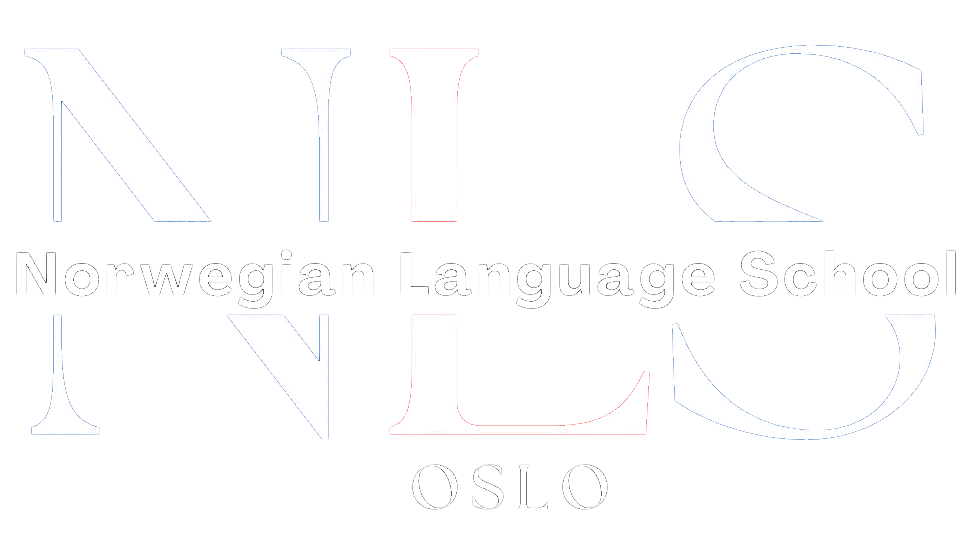
Norse Mythology: Tales of Gods and Heroes
Have you ever wondered about the ancient tales that captivated the Vikings and shaped their worldview? Norse mythology is a treasure trove of epic quests, mythical creatures, and larger-than-life gods and heroes. Step into the enchanting world of Norse mythology and discover the captivating stories that have stood the test of time. From the mighty gods who ruled over Asgard to the fearless Vikings who revered them, this mythology continues to intrigue and inspire.
Table of Contents
ToggleKey Takeaways:
- Norse mythology is filled with epic quests and adventures.
- The gods and heroes of Norse mythology were revered by the Vikings.
- Exploring Norse mythology allows us to delve into a unique and captivating world.
- The tales of Norse mythology continue to influence modern culture.
- Discover the mythical creatures and beings that populate the Norse mythological universe.
Exploring the Norse Pantheon
Deep within the realm of Norse mythology lies a pantheon of powerful gods and goddesses, each with their own unique characteristics and stories. In this section, we will turn our gaze towards the gods, with a particular focus on the mighty Odin, as well as the mythical realm of Valhalla.
The All-Father: Odin
At the pinnacle of the Norse pantheon stands Odin, the wise and enigmatic All-Father. As the ruler of Asgard, the realm of the gods, he presides over matters of wisdom, knowledge, and war. Often depicted as a bearded figure wielding a spear and adorned with a wide-brimmed hat, Odin is revered for his immense power and foresight.
One of the most prominent figures in Norse mythology, Odin’s influence extends beyond Asgard. Known as the god of poetry and magic, he is said to have discovered the sacred runic alphabet, bestowing its powers upon mankind. Additionally, Odin is associated with the practice of seidr, a form of Norse magic used to glimpse into the future.
Odin’s thirst for knowledge and desire to prevent the fate of Ragnarok, the apocalyptic event that would bring about the end of the world, led him to embark on a quest for wisdom. According to Norse mythology, Odin sacrificed one of his eyes to drink from the Well of Mimir, gaining immense knowledge in the process.
The Halls of Valhalla
Valhalla, often described as a majestic and glorious hall, is the realm where fallen warriors are believed to be welcomed after death. This mythological dwelling is overseen by Odin, who personally selects brave warriors to join the ranks of his loyal followers.
Warriors who demonstrate valor and bravery on the battlefield may earn a place in Valhalla, where they are granted eternal feasting and fighting alongside their fellow fallen comrades. This belief in an afterlife filled with honor and glory played a significant role in shaping the warrior culture of the Vikings.
The legends of Valhalla have captured the imaginations of many, with numerous references and adaptations appearing in modern literature, film, and popular culture.
In the next section, we will explore the diverse array of mythical creatures and beings that populate Norse mythology, from fearsome giants to cunning elves, unveiling the vibrant and fantastical world that surrounds the gods and heroes.
Mythical Creatures and Beings in Norse Mythology
In the enchanting world of Norse mythology, a rich cast of mythical creatures and beings brings the stories to life. From fearsome giants to cunning elves, these characters add depth and intrigue to the epic tales passed down through generations.
Gigantic Giants and Formidable Trolls
One of the most prominent creatures in Norse mythology is the giant. These colossal beings, known as Jotnar, are often depicted as powerful and menacing. From the frost giants, like Ymir, who are associated with the freezing realms, to the fire giants who inhabit the realm of Muspelheim, each carries its own unique significance in the Norse pantheon.
Another group of formidable beings are the trolls, known for their rugged appearances and supernatural strength. These creatures, sometimes portrayed as monstrous or misshapen, dwell in the mountains and forests, guarding ancient treasures or acting as formidable foes for heroes to overcome.
Mischievous Elves and Enchanting Dwarves
Elves and dwarves play significant roles in Norse mythology, often serving as intermediary beings between gods and humans. The elves, known as Alfar, are portrayed as ethereal and mysterious creatures of immense beauty and magical abilities. They are associated with nature, wisdom, and enchantment.
Dwarves, on the other hand, are skilled craftsmen known for their exceptional craftsmanship in creating weapons, jewelry, and other valuable items. Renowned for their strength and resilience, the dwarves often play a crucial role in aiding heroes in their quests.
The Ominous Ragnarok: The End of All Things
Ragnarok, a cataclysmic event, takes center stage in Norse mythology. This apocalyptic event foretells the end of the world as it is known, signaling the demise of gods, heroes, and mythical creatures alike. During Ragnarok, the mighty battles between gods and giants, the destruction of the nine realms, and the submergence of the world in chaos and darkness are prophesied.
However, amidst the destruction, Ragnarok also lays the foundation for a new world to emerge, offering hope for renewal and rebirth. It represents a cycle of creation and destruction that is at the core of Norse mythology.
| Mythical Creatures and Beings | Significance |
|---|---|
| Giants | Representing the forces of chaos and power, embodying primal forces of nature |
| Trolls | Acting as guardians of hidden treasures and formidable antagonists for heroes |
| Elves | Mysterious beings associated with nature, wisdom, and enchantment |
| Dwarves | Skilled craftsmen with exceptional abilities in creating precious items |
Heroes and Legends in Norse Mythology
Norse mythology is filled with a rich tapestry of heroes whose epic deeds and sagas have been passed down through generations. These legendary figures exemplify the valor and bravery that permeate the myths and stories of the Vikings and their gods.
One of the most renowned heroes in Norse mythology is Sigurd, the dragon-slayer. As part of the Volsunga saga, Sigurd embarks on a perilous journey to rescue a captive princess and slay the fearsome dragon Fafnir. His steadfast determination and unmatched skill make him an enduring symbol of heroism in Norse mythology.
Another famous hero is Beowulf, whose incredible strength and unwavering courage are celebrated in the eponymous Old English epic poem. Beowulf’s mighty battles against monstrous foes, such as Grendel and the dragon, exemplify the indomitable spirit and warrior ethos of the Viking culture.
The Valkyries, celestial maidens who choose the souls of fallen warriors to join the gods in Valhalla, are also revered as heroic figures in Norse mythology. These fierce and powerful women, often depicted as warriors themselves, play a pivotal role in selecting the bravest warriors for their ultimate reward.
“Valor is the soul of a true hero, fearless in the face of danger and unwavering in their pursuit of glory.”
These heroes and their stories serve as a source of inspiration for countless tales, songs, and artistic interpretations. They embody the noble virtues cherished by the Vikings and continue to captivate audiences to this day.
Realms of the Gods: Asgard and Midgard
In Norse mythology, the gods and humans inhabit different realms. One of these realms is Asgard, the dwelling place of the gods, while the other is Midgard, the realm of humans. Each realm possesses unique characteristics and holds great significance in the intricate tapestry of Norse mythology.
Asgard: The Realm of the Gods
Asgard stands high above the mortal realm, perched atop the branches of Yggdrasil, the World Tree. It is a place of extraordinary beauty and power, where the gods reside in elaborate halls and palaces. Asgard is home to mighty gods like Odin, the All-Father, who rules over the divine pantheon, along with Thor, the god of thunder, and Freya, the goddess of love and fertility. With its grandeur and opulence, Asgard reflects the divine nature of its illustrious inhabitants.
Midgard: The Realm of Humans
Midgard is the realm inhabited by humans, a world nestled between the heavens and the underworld. It is a land of vast landscapes, teeming with mortal life. Midgard is where the stories of heroes and adventurers unfold, as humans face both the wonders and perils of their existence. The realm of Midgard provides a stage for the heroic deeds and epic sagas that are central to Norse mythology.
“As humans, our connection to the gods is not lost. We exist in Midgard, within the realm that serves as a bridge between mortals and immortals.” – Snorri Sturluson, Prose Edda
Connections Between the Realms
Although Asgard and Midgard are separate realms, they are not completely disconnected. The gods often interact with mortals, forming alliances, imparting wisdom, and sometimes even intervening in their lives. In Norse mythology, the gods’ interactions with humans shape destinies and influence the course of events. The interplay between Asgard and Midgard weaves a rich tapestry of mythology, bridging the realms of the divine and the mortal.
Asgard and Midgard: A Visual Comparison
| Asgard | Midgard |
|---|---|
| Realm of the gods | Realm of humans |
| Elevated, above mortal realm | Nestled between heavens and underworld |
| Elaborate halls and palaces | Vast landscapes |
| Ruled by Odin, Thor, and Freya | Inhabited by mortal life and heroes |
As we explore the realms of Asgard and Midgard in Norse mythology, we uncover the profound connections between gods and mortals, as well as the contrasting landscapes and inhabitants that shape these realms. The distinct qualities and interactions between Asgard and Midgard serve as the foundation for countless tales that continue to captivate and inspire us today.
Norse Goddesses and Their Influence
In Norse mythology, the pantheon is not only populated by mighty male gods and fearless heroes but also by powerful goddesses who deserve equal recognition. These goddesses, such as Freya, Frigg, and Skadi, play crucial roles in the rich tapestry of Norse mythology, making significant contributions and leaving a lasting influence on the ancient tales.
One of the most prominent Norse goddesses is Freya, associated with love, beauty, and fertility. She is often depicted as a strong and independent deity, known for her magical abilities and fierce determination. Freya’s influence extends beyond romance, as she is also a skilled practitioner of seiðr, a form of magic deeply rooted in Norse mythology.
Freya’s role in Norse mythology highlights the strength and agency of women, challenging traditional gender roles and expectations.
Another notable goddess is Frigg, known as the queen of Asgard and the wife of Odin. Frigg is associated with wisdom, motherhood, and domestic skills. She possesses the knowledge of fate but remains silent, guarding her secrets closely. Frigg’s influence extends into the realms of prophecy and weaving the fabric of destiny.
Skadi, the icy giantess, represents independence and the power of nature. She is associated with winter, hunting, and skiing. Skadi is a fierce huntress and a symbol of endurance and resilience. Her story and influence emphasize the strength and capabilities of women in Norse mythology.
These goddesses and many others wield immense power and shape the narrative of Norse mythology. Their influence is not limited to the divine realm but is also felt by mortal beings. Norse mythology teaches us to recognize and honor the significant contributions of these strong and independent female figures, highlighting their roles in shaping the destiny of gods and humans alike.
Key Takeaways:
- Norse mythology includes powerful goddesses such as Freya, Frigg, and Skadi.
- Freya embodies love, beauty, fertility, and magical prowess.
- Frigg is associated with wisdom, motherhood, and the weaving of destiny.
- Skadi represents independence, nature, and the strength of women.
- These goddesses leave a lasting influence on Norse mythology, emphasizing the important contributions of female figures.
Conclusion
As we conclude our journey through the captivating world of Norse mythology, it becomes clear that these ancient tales continue to hold immense popularity and influence in various aspects of human culture. From the adventurous exploits of Viking warriors to modern adaptations in literature and popular culture, Norse mythology has left an indelible mark on our collective imagination.
Through tales of epic quests and the mighty Norse gods, we have seen how these stories have provided inspiration and guidance to generations of Vikings. The valor and bravery displayed by heroes and heroines in Norse mythology continue to resonate with audiences today, reminding us of the enduring qualities of human strength and resilience.
Moreover, we cannot overlook the significant role played by the powerful Norse goddesses. From the fierce Freya to the wise Frigg, these strong and independent female figures exemplify the importance of feminine power in Norse mythology. Their influence extends far beyond the pages of these ancient tales, as they continue to inspire and empower individuals in our modern world.
In summary, Norse mythology, with its rich tapestry of gods, goddesses, heroes, and mythical creatures, serves as a timeless source of inspiration and fascination. Its enduring popularity among millions across the globe speaks to the universal appeal of these ancient tales. So, let us continue to celebrate and explore the wonders of Norse mythology, keeping its legacy alive for generations to come.
FAQ
What is Norse mythology?
Who were the Vikings?
What are some epic quests in Norse mythology?
Who is Odin in Norse mythology?
What is Valhalla?
What are some mythical creatures in Norse mythology?
What is Ragnarok in Norse mythology?
Who are some heroes in Norse mythology?
What are Asgard and Midgard in Norse mythology?
Who are the Norse goddesses?

Norwegian A1-A2
Course Overview The Norwegian A1-A2 course is an online program focused on teaching essential Norwegian grammar and vocabulary. It includes a variety of materials and topics, with opportunities to interact with a Norwegian teacher entirely online. Curriculum Highlights The course covers key areas such as grammar and vocabulary and topics such as family, daily life, education, work, traditions, and leisure activities. Who Should Enroll? This course is perfect for beginners or those at the A1 or A2 levels who want to improve their Norwegian skills. What You Get Access to the full Norwegian A1-A2 course. A monthly 1-hour online conversation with a teacher. Many written and oral assignments. Comprehensive information on Norwegian grammar, Norwegian vocabulary and how to use them, important sentence structures, etc. Tips on additional resources to further enhance your Norwegian learning.
0 students enrolled
Last updated Dec 10th, 2024
If you want to learn Norwegian, you can register for classes here. We look forward to hearing from you and helping you become fluent in Norwegian.





